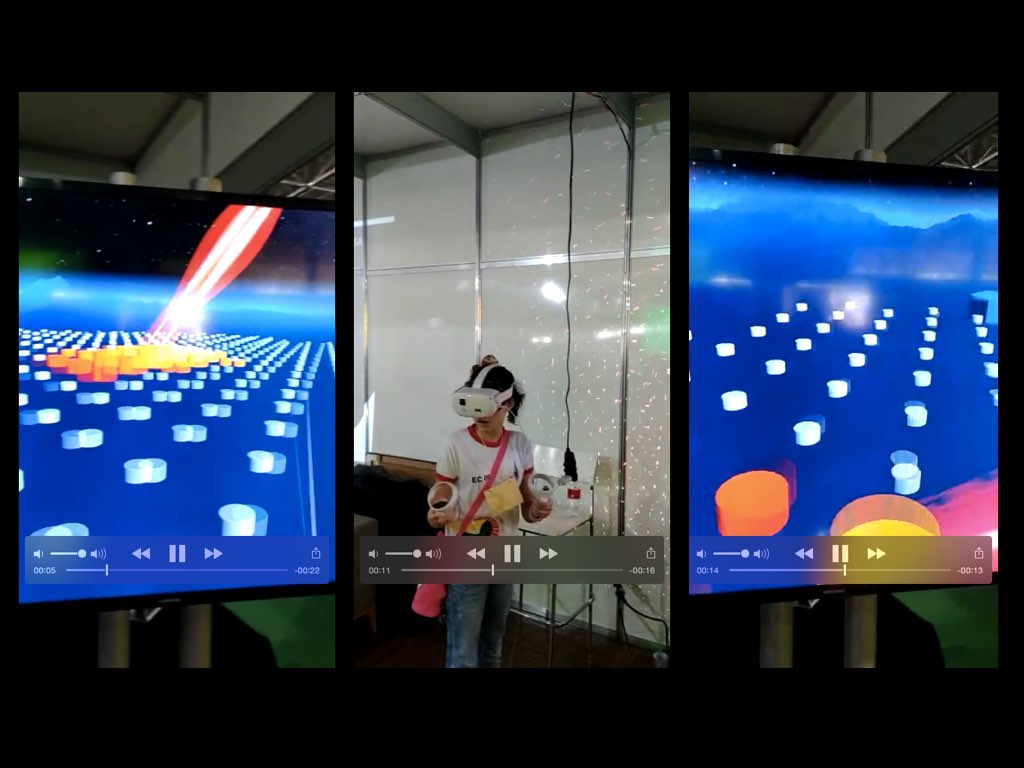A virtual journey to the Pierre Auger Observatory
"The autonomous 3D virtual visualization device of the Pierre Auger cosmic ray observatory was developed at LIP in Minho. It was now officially presented to the collaboration and tested at a science fair in Brasília."
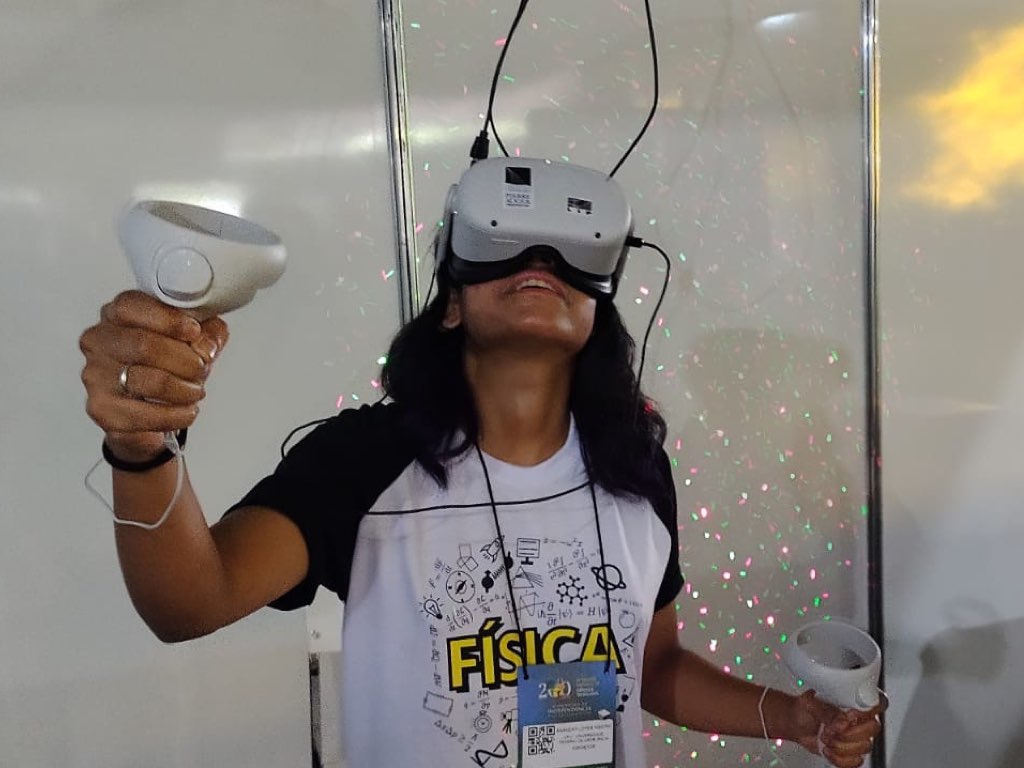
In the midst of the reigning excitement, the girl remains undisturbed. She wears virtual reality goggles and seems very focused. In fact, she feels she is in the middle of Pampa Amarilla in Argentina, where the Pierre Auger Observatory is located. She hears the wind rustling the bushes, sees the sandy soil at her feet, the snowy mountains in the distance.
Bending down, she may even enter one of the surface detectors of the largest cosmic ray observatory in the world - they are filled with water, but in this virtual world this is not a problem. Further on, it turns around several times trying to get a better view of the particle cascades developing in the atmosphere due to the interactions of cosmic rays coming from all directions. You realize that when she changes direction she really sees different things: the virtual world fills all the space around her.
The other visitors, many of them waiting their turn, watch her movements. The 2D projection on the screen and the explanations of the young guides allow them to get an idea of what is happening in 3D in the virtual world she is in.
We are in Brasilia, at the science fair that, from November 28 to December 4, celebrated the 19th edition of the National Week of Science and Technology. The theme was "Bicentennial of Independence: 200 years of science, technology and innovation in Brazil" and the objective was to mobilize the population, especially children and young people, around activities valuing creativity, scientific attitude and innovation.
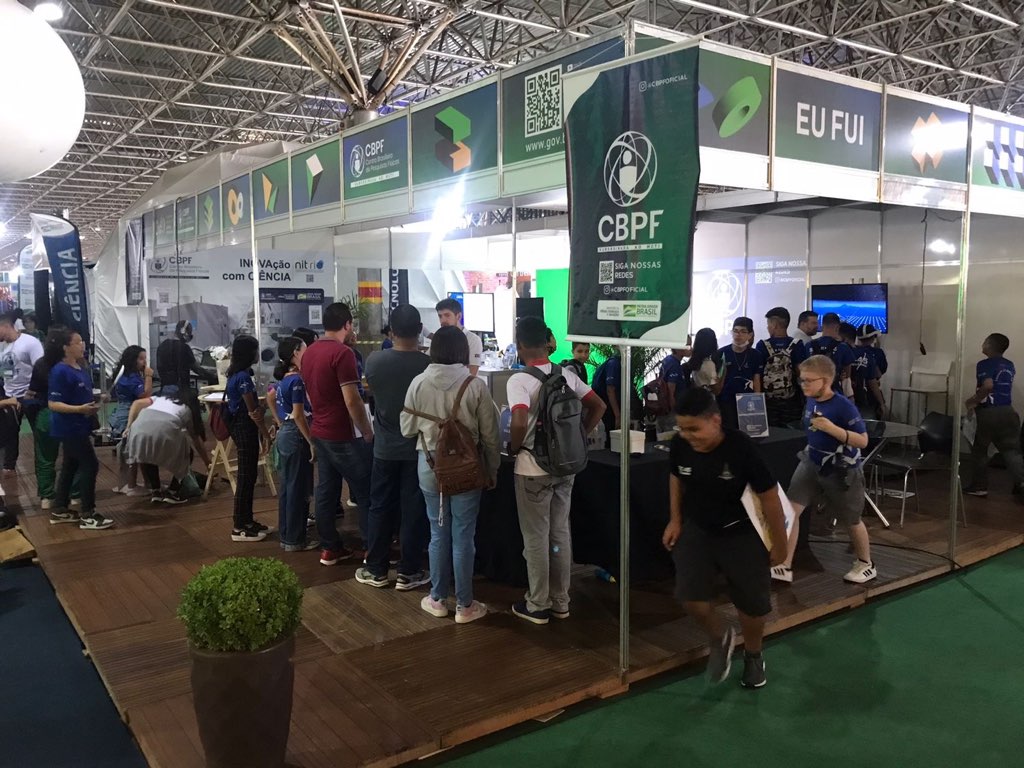
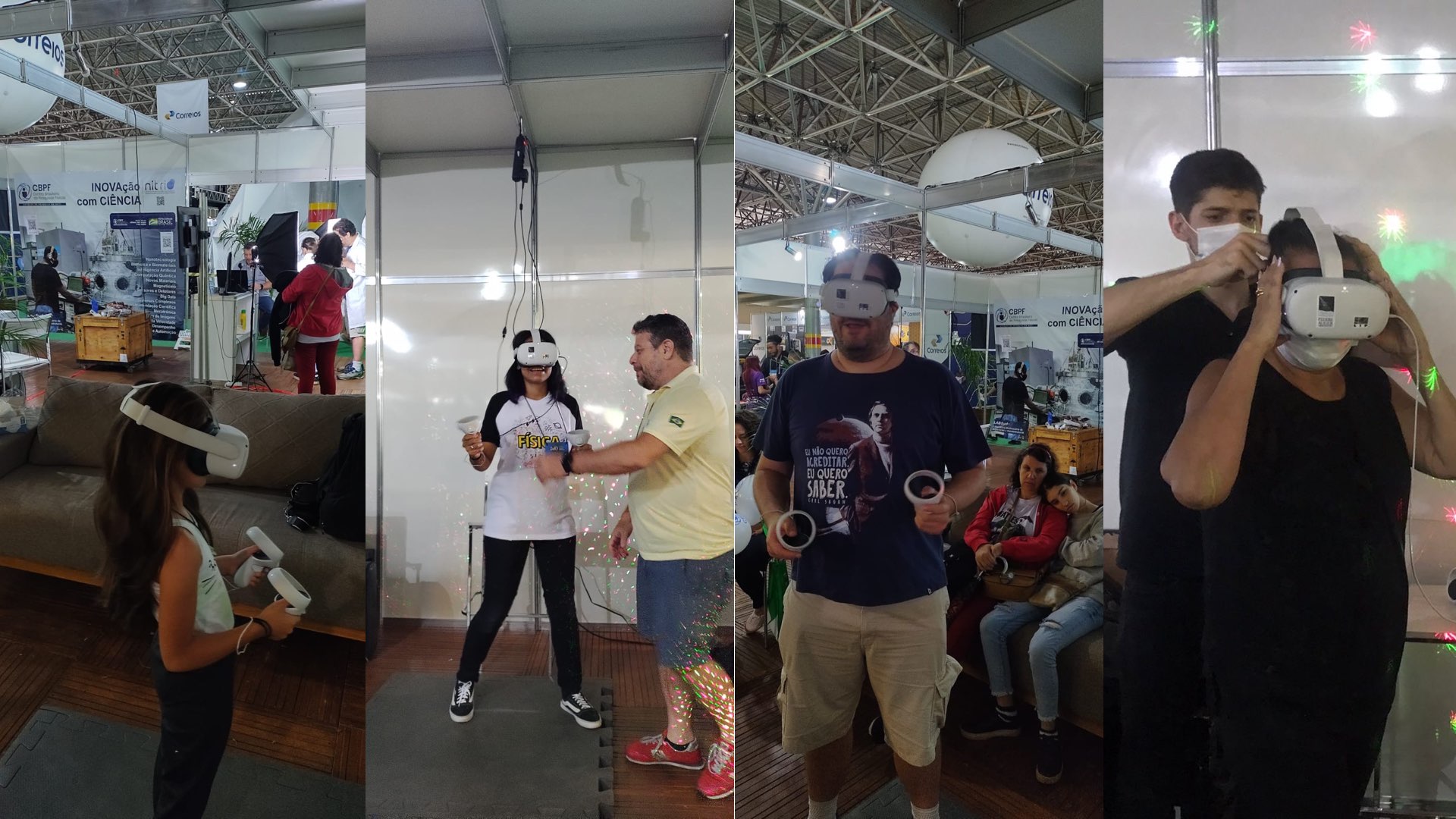
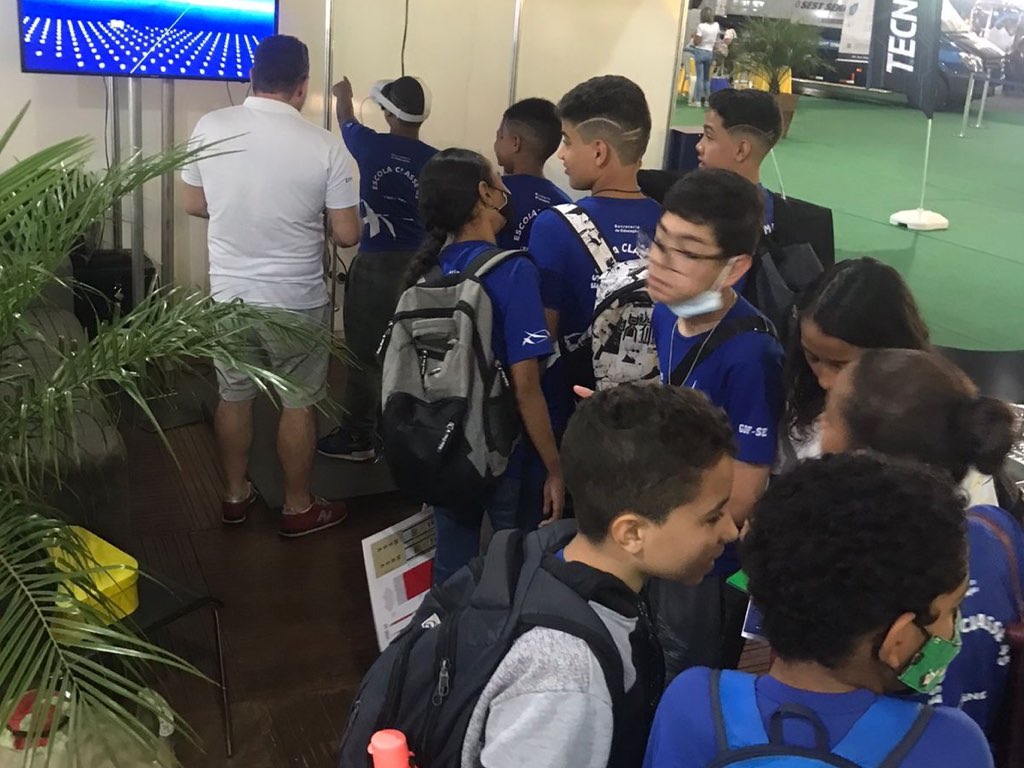
The stand is that of the Brazilian Center for Physics Research (CBPF). The device that is making such a success could go by the code name of LIP-VR3D-Auger: virtual 3D viewer (VR3D) of the Pierre Auger Observatory and was developed at the Minho node of LIP, in Braga, by Henrique Carvalho, who highlights the collaboration and valuable discussions with other members of LIP's Auger group. LIP-VR3D-Auger was recently tested at Jornadas do LIP and in outreach events in Minho, and also officially presented to the Pierre Auger collaboration at its most recent meeting, which took place from 13 to 18 November in Malargue (Argentina). This presentation was made by Pedro Assis (LIP/IST), who we also see in the two pictures below wearing the glasses during the collaboration meeting.
At CBPF's stand is Luís Mendes, a LIP collaborator currently in Brazil, who took LIP-VR3D-Auger to Brasilia: "I thought a science fair of this size was an excellent opportunity to test the equipment. We had lines of people willing to try it. I immediately thought it would be a success, but I couldn't imagine how successful it would be with deaf people and autistic people."
The equipment consists of a virtual reality oculus and two commands. Everything is like a computer game. The user can walk around the site where the observatory's over 1,600 surface detectors are located, viewing in detail not only the landscape but also the detectors. In the other mode of operation available, you can view the development in the atmosphere of cascades originated by high-energy cosmic rays, and their detection at the Observatory - phenomena that in reality are not visible to the naked eye. The googles work a bit like binoculars: they have a screen for each eye, and an app that builds a 3D view, which is displayed to us (VR3D technology). The existence of cameras directed outward allowed the implementation of a security measure: the virtual world has a border. If this is crossed, the visitor will see the real world.
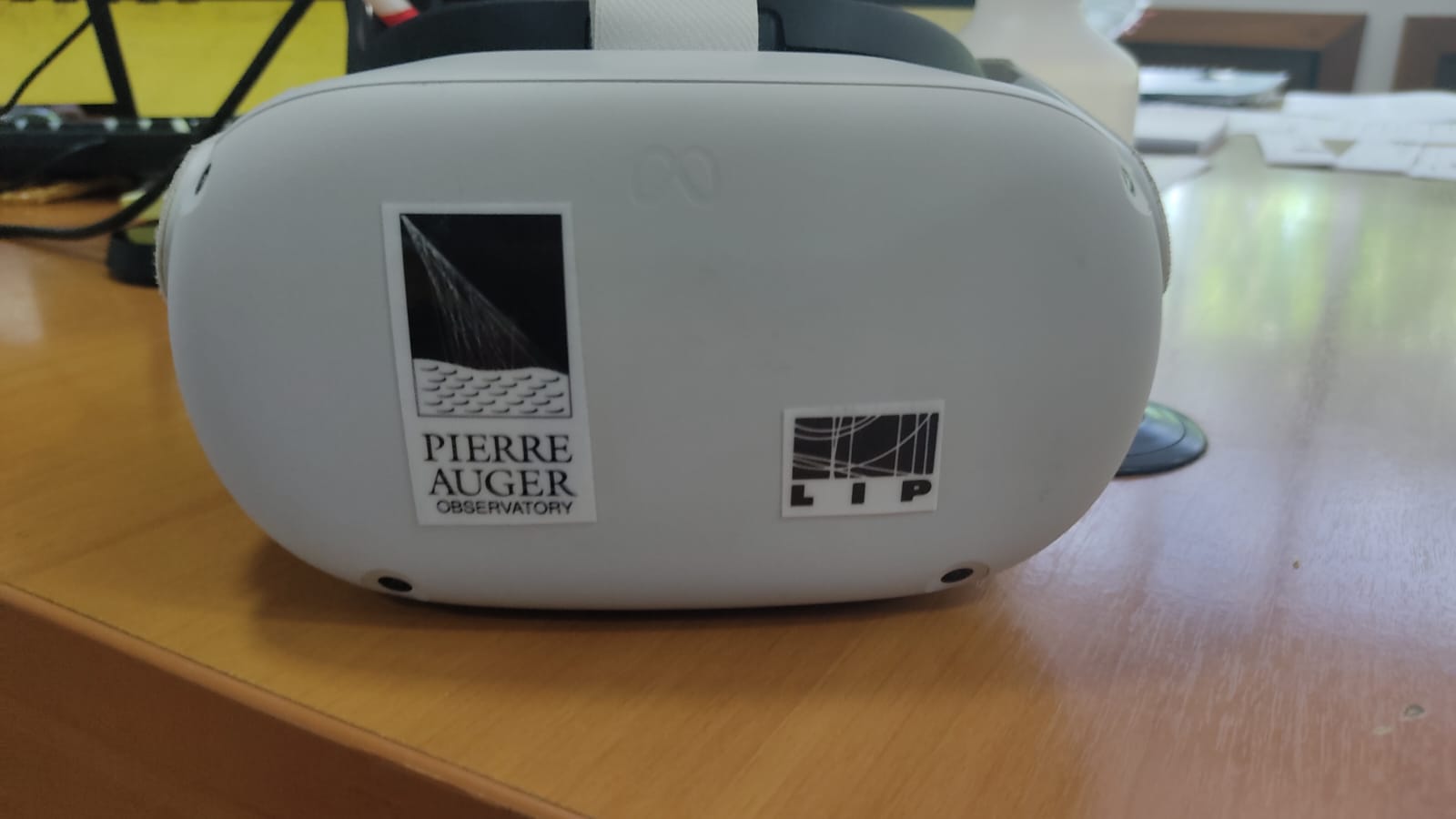
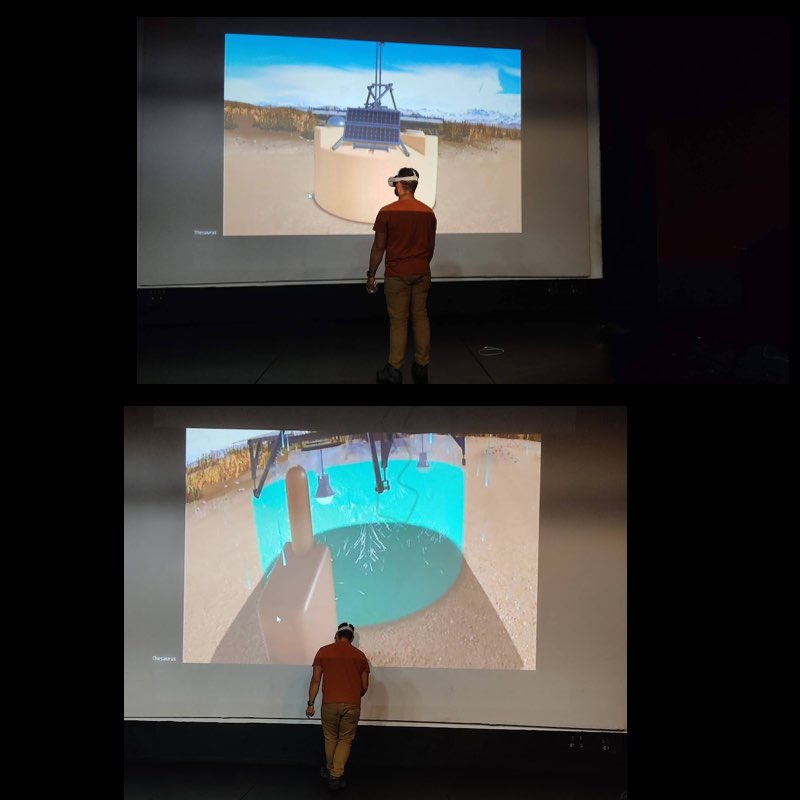
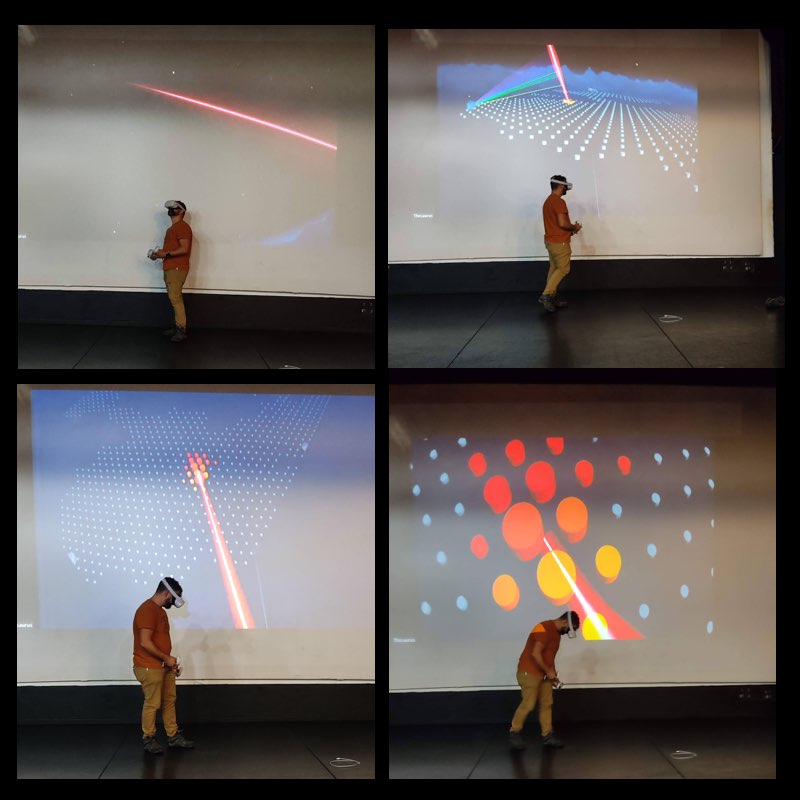
Henrique Carvalho summarizes the story and the workings of the device: it all started with the development of a 3D viewer of the particle cascades detected in Auger (the LIP3dAuger) to be used by the scientists but also for dissemination and educational purposes. This development was done in Unity, a very popular game development language for mobile devices (iOS and Android) that can be used to create 3D games and other interactive experiences and is now used in many fields, from film industry to engineering.
From the LIP3dAuger event viewer, LIP researcher in Auger Sofia Andringa and Raul Sarmento joined Henrique to create the Auger Masterclasses - an activity in which high school students analyze data from a particle physics and astrophysics experiment. The pilot Auger Masterclasses took place during the 2022 LIP anniversary celebrations and involve the three LIP nodes: Lisbon, Coimbra and Braga. The Auger Masterclasses will soon be integrated in the IPPOG's official list (International Particle Physics Outreach Group).
For Henrique Carvalho, the next step was to adapt the event visualizer to the meta QUEST2 oculus, which also run Android. The available functionalities were also extended, namely by integrating a detailed description of the detectors and of the environment surrounding the observatory. The fact that the equipment is fully autonomous and portable also increases the possibilities of use.
Bringing particle physics to the general public always implies an effort to make the invisible world of particle physics closer to the visitors. In general, what we do is to show that particles really exist and are part of our daily life through the detection of cosmic particles that surround us in simple devices that show us the tracks left by the passage of particles. As explained by Nuno Castro (member of LIP's director board and UM professor), these virtual and interactive visualization tools fulfill a complementary role: they allow us to transpose this experience to the more complex detectors used in some of the major international projects in which LIP participates, namely at CERN's LHC and in astroparticle experiments, as in this case.




